Democrats’ Fracking War Heats Up As 2020 Voting Begins
Democrats are drilling down on opposite sides of the fracking divide, widening a schism between the party’s climate-concerned progressive wing and centrists who fear a hard-line stance against fossil fuels risks ceding critical swing states to President Donald Trump.
As Iowa caucusgoers cast the first votes of the 2020 primary contest on Monday, Sen. Bernie Sanders (I-Vt.), who an aggregation of polls showed leading in the state in the race for the Democratic presidential nomination, unveiled the first-ever federal bill to phase out fracking nationwide. It calls for instituting a complete ban on the drilling technique by 2025. Reps. Alexandria Ocasio-Cortez (D-N.Y.) and Darren Soto (D-Fla.) joined Sen. Jeff Merkley (D-Ore.) to co-sponsor the legislation.
In December, former Vice President Joe Biden, the leader in an aggregation of national polls in the Democratic race, told activists in Iowa that “you can’t ban fracking right now” and, if that’s what they wanted, they “ought to vote for someone else.” On Sunday, Rep. Conor Lamb (D-Penn.) published a letter to the editor in The Wall Street Journal praising the centrist favorite for his opposition to banning fracking.
The opposing positions illustrate on one hand how quickly the global warming crisis has reshaped Democratic politics and on the other the strength of the industry’s grip on the party that, under President Barack Obama, helped spur the drilling boom.
The debate comes at a vulnerable moment for the industry as low gas prices, falling costs of renewable energy sources and mounting worries about climate change are starting to spook investors ― a once-unthinkable reality that came to a head last week when CNBC commentator Jim Cramer declared: “I’m done with fossil fuels. They’re done. They’re just done.”
Pollution Woes Incite Fracking Foes
The fracking industry, by its own account, has come a long way since 2008, when the watchdog site ProPublica started publishing a series of exposés on the threat posed by the cancer-causing chemicals the drilling practice releases into drinking water across the U.S.
But frackers’ own thirst for water has only grown. A 2018 study in the journal Science Advances found fracking companies used 770% more water per well in 2016 than in 2011. It also produced up to 1,440% more toxic wastewater. Meanwhile, a Rolling Stone investigation published last month found the drilling byproduct to contain dangerous amounts of radioactive rock unearthed during extraction that appears to be creating an environmental crisis unto itself.

Emissions from fracking are coming under increasing scrutiny, too. In a report published in January 2019, scientists at more than a dozen environmental groups projected new U.S. oil and gas drilling ― 90% of which depends on fracking ― would produce upward of 1,000 coal plants’ worth of planet-heating gases. New satellites equipped to monitor output from gas wells ― primarily spewing methane, a shorter-lasting but more potent greenhouse gas than carbon dioxide ― detected the largest leak in U.S. history at a little-known fracking site in Ohio.
Those pollution concerns have driven efforts to ban fracking on county and state levels. Now nearly every major Democrat vying to take on Trump later this year supports ending fracking on federal lands. Such a ban, which could be enacted by a president through executive order, could affect 14% of total production, according to an RBC Capital Markets report last October.
Some, such as Sanders, have embraced a more aggressive approach, calling for an end to fracking altogether.
“A nationwide fracking ban would be invaluable for human health,” Barbara Gottlieb, environment and health program director at the nonprofit Physicians for Social Responsibility, said in a statement. “Fracking harms human health, contaminates huge amounts of water, and pollutes the air. It exposes local communities to chemicals known to be toxic to humans and animals.”
Fueling Swing State Anxieties
Calls to completely ban fracking are generating some excitement nationally. In a September poll commissioned by the left-leaning think tank Data for Progress, nearly 46% of registered voters said they support prohibiting fracking, including 32% who “strongly” favored a ban. But such proposals aren’t sitting well in critical battleground states like Pennsylvania.
In a November 2019 poll by Kaiser Family Foundation and the Cook Political Report, 69%, swing voters in the Keystone Stone overwhelmingly supported the Green New Deal framework for a progressive, ambitious climate policy. But just 39% backed a ban on fracking.
“Men and women need to eat and put a roof over their head, and I am willing to die on the union way of life hill,” Pennsylvania Lt. Gov. John Fetterman (D), a populist progressive from the state’s economically devastated western half, said in a recent episode of The New York Times podcast The Daily. “There needs to be the most stringent, rigorous environmental controls and oversights, and plans to continually transition towards cleaner energy sources. But (fracking) is still a necessary part of our economy.”
The podcast featured leaders from traditionally Democratic unions who work on fossil fuel projects saying they’d recommend rank-and-file workers vote for Trump if Democrats nominated a candidate who supported a fracking ban. It’s a message the industry’s biggest lobby is eager to amplify.
“Banning a safe, successful method of developing energy would erase a generation of American energy progress and in the process destroy millions of U.S. jobs, spike household energy costs and hurt farmers and manufacturers,” Bethany Aronhalt, a spokeswoman for the American Petroleum Institute, said by email Monday.
Trump, a fossil fuel hardliner who rejects the basic science underpinning climate change, has made the “energy revolution” and “American energy dominance” central planks of his public messaging. Rolling back environmental regulations, particularly those aimed at curbing emissions from the oil and gas sector, has been and remains a top priority for his administration, which took some of its most brazen steps yet to unwind such public safeguards last month.
Others say fears that targeting fracking will deliver Pennsylvania and its 20 electoral votes to Trump are overblown. Less than 1% of Pennsylvania’s population works in gas drilling, and union membership is only about 12% of those employed in the industry.
Local elections in Pennsylvania undercut the national narrative about fracking’s strength as an electoral issue in the state. In 2018, two democratic socialists calling either for a moratorium or new restrictions on fracking ― Sara Innamorato and Summer Lee ― defeated old-guard incumbent Democrats and won seats in the Pennsylvania House of Representatives. Last November, three out of four Democrats who ran for city council in the deep-red Pittsburgh suburb of Franklin Park won after campaigning on their opposition to new fracking in the town’s 80-acre public park.
Sanders, who pitched a $16.3 trillion Green New Deal last fall, said Monday he’d ensure “a just transition for all fossil fuel workers.”
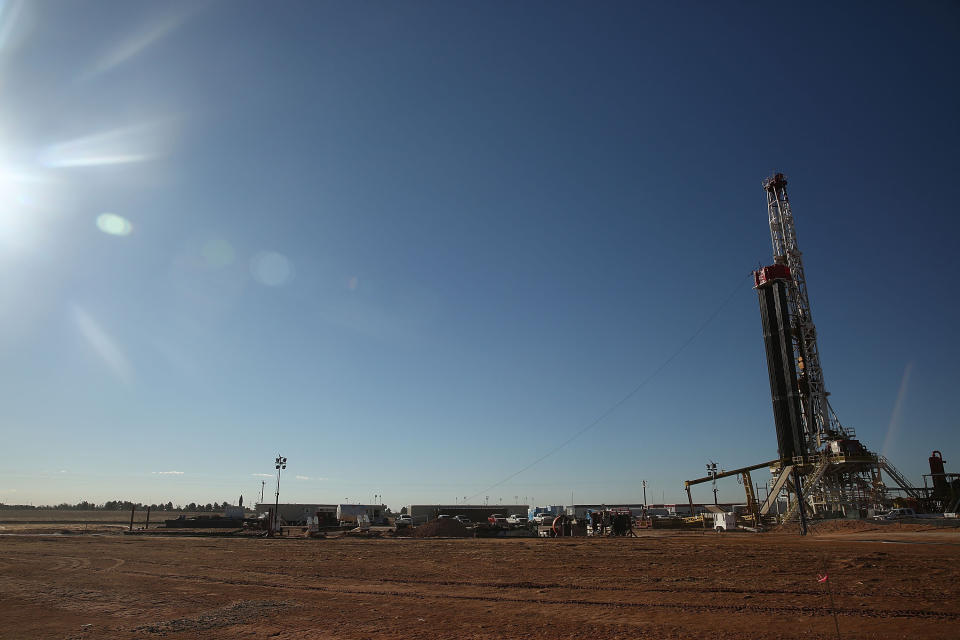
“We must realize that workers in the fracking fields are not the enemy, coal miners are not the enemy, and oil rig workers are not the enemy. Climate change is the enemy,” Sanders said in a statement. “If we are serious about clean air and drinking water, if we are serious about combating climate change, the only safe and sane way to move forward is to ban fracking nationwide.”
‘Goldilocks Zone’
Ironically, it’s the oil and gas industry that could see benefits from federal policies that cut back on the global supply of fuel. For years, oil and gas prices have plunged lower and lower as production roared, creating a glut in the market. The oversupply had the effect of running coal-fired power plants out of business as cheaper gas remained the preferred option for policymakers who also touted its generally lower emissions.
But it also made the costly business of fracking new wells and transporting that product to market largely unprofitable. A telling headline from the financial site Investopedia last summer wondered: “Can fracking survive at $50 a barrel” for oil?
The answer, the site concluded, was yes, but production would likely decrease. That’s bad news for the U.S. industry giants Exxon Mobil Corp. and Chevron Corp., which last year laid plans to dramatically ramp up production in the Permian Basin, the teeming oil and gas formation that spans from West Texas to New Mexico. Both companies reported slumping fourth-quarter earnings last Friday. Goldman Sachs analysts downgraded Exxon stock to “sell” on Monday.
Five years of low prices put the industry in a bind. At prices cheaper than coal, fracked gas became the nation’s main fuel for electricity, providing market dominance even if it failed to generate substantial profits. But the ever-falling price of solar and wind energy now threatens to gobble up that market if, or when, gas prices climb. It’s already cheaper to increase energy efficiency and build renewables than to construct new gas plants and pipelines, according to a 2019 report from the nonprofit Rocky Mountain Institute. By the mid-2030s, it’ll cost less to deploy clean energy than to continue operating existing gas plants ― and that’s without a major federal intervention to phase out fracking.
“What the oil and gas sector needs is Goldilocks pricing; not so high that renewables gain a competitive advantage and not so low that the companies can’t make profits,” Clark Williams-Derry, an analyst at the nonprofit Institute for Energy Economics & Financial Analysis, said by phone. “But that Goldilocks zone is getting narrower and narrower.”
Related...
Here's Your Cheat Sheet For The 2020 Democratic Candidates' Climate Plans
Democrats' Climate Forum Exposes Rifts On Fracking, Nuclear Power And The Filibuster
Joe Biden Said No Scientist Supports Bernie Sanders’ Climate Plan. Dozens Just Did.
Also on HuffPost
Love HuffPost? Become a founding member of HuffPost Plus today.
バングラデシュ
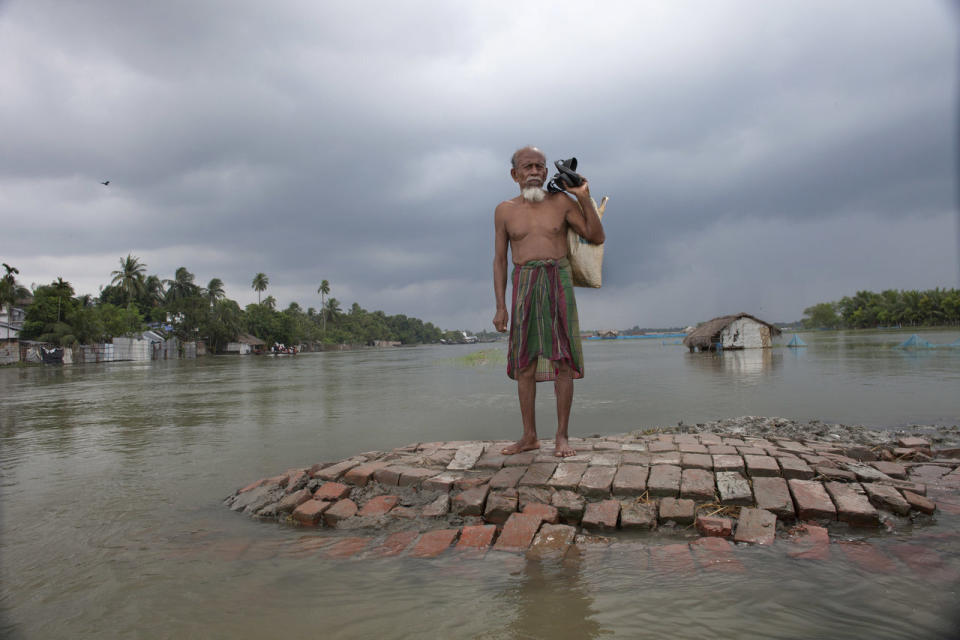
また、EUのグローバル気候変動同盟(GCCA)は「すでに沿岸部や乾燥・半乾燥地域では、洪水、熱帯低気圧、高潮、干ばつが頻発している」と報告している。
バングラデシュのシェイク・ハシナ首相は9月にハフポストUS版に寄稿し「バングラデシュは、気候変動の脅威に最もさらされている国です。気候変動と、気候変動が与えるその影響と闘うためには、明確なゴールが重要です」と述べている。また、2015年の降水量が例年より50%増え、農作物が深刻を受けたことに触れ「パリの気候変動会議では、測定可能で検証できる排出量削減目標を定めなければなりません」と強調した。
上の写真は2011年にバングラデシュ南西のサトキラ地区で起こった洪水の様子だ。男性がレスキューボートを待っている。
チャド
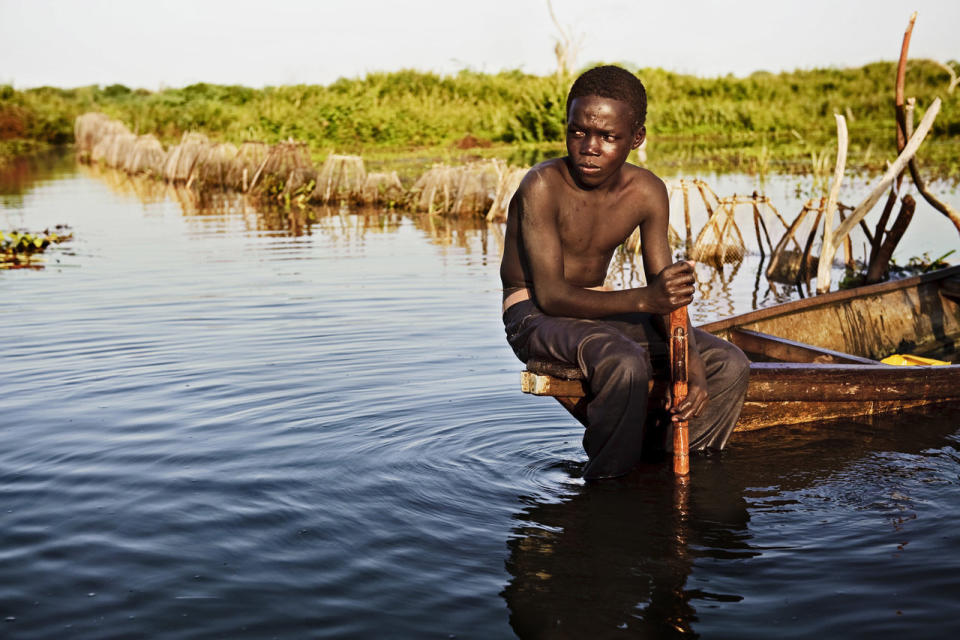
チャドはアフリカで最も貧しい国のひとつで、大規模な自然災害に対処するための十分な設備がない。GCCAの報告書は「自然災害によって深刻な干ばつや破壊的な洪水が増加する可能性があり、農業、畜産、漁業、健康や住宅へ大きな打撃を与えるだろう」と伝えている。
気候変動による被害が最も顕著なのはチャド湖だ。国連によれば、湖の大きさは1963年と比較して20分の1に縮んでいる。
上の写真は、かつては世界で最も大きな湖のひとつだったチャド湖だ。ニジェール、ナイジェリア、カメルーンといったチャド湖に面するその他の国々も、気候変動と湖の面積が縮んだことによる影響を受けている。
パリの気候変動サミットで、ナイジェリアのムハンマド・ブハリ大統領は「チャド湖に面している国々は、お互いが直面している課題についてさらに詳しく話し合い、この問題を一日も早く解決しなければなりません」と語った。
太平洋の島々

10万5000人が住み、33の島国からなるキリバスは平均標高が2mもない。Webマガジン「Slate」によれば、パリの気候変動会議でアノテ・トン大統領は「島に人が住めない状態になった時は島民を保護するとフィジーが申し出てくれている」と語っている。
上の写真は9月に撮影された。キリバスの村民ベイア・ティームは、以前は3~4年に一度起こっていた異常な高潮が今は3カ月おきに発生し、ほとんどの井戸が海の下に沈んでしまった、と話す。
キリバスに助けの手を差し伸べたフィジーも、自然災害に直面している。10月に行われた太平洋諸国の会議でラトゥ・イノケ・クンブアンボラ外相は、気候に影響を受けやすい腸チフスやデング熱、レプトスピラ症、下痢性疾患がフィジーで再び増えていると述べたとガーディアン紙が伝えている。
ニジェール
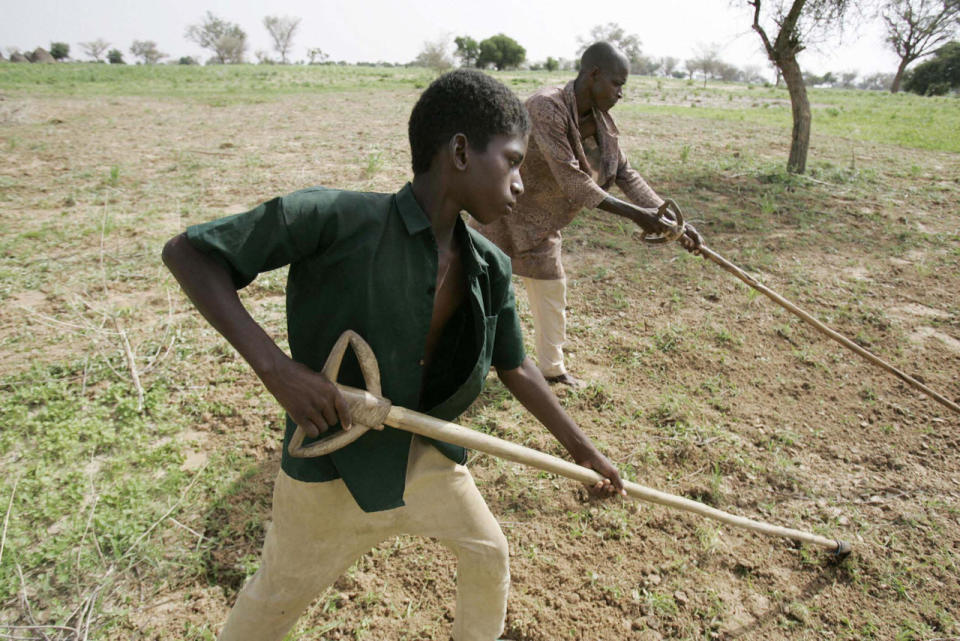
2013年には世界銀行のエコノミスト、エル・ハッジ・アダマ・トゥーレ氏が次のように述べている。「気候リスクにさらされ、さらに内陸国であるニジェールは、世界で最も温暖化の影響を受けやすい国のひとつです」「状況を複雑にしているのは、国内と地域それぞれで抱える過激派です。これらの要因が農業に影響を与えることで、食料や栄養の問題に発展します」
ニジェールは世界で最も出生率の高い国だ。女性1人あたりが産む子供は7.6人で、2031年までに人口が2倍に増加すると予想されている。気候変動で農業が打撃を受ければ、多くの国民が食料不足に苦しむ可能性がある。
上の写真は農作業をするニジェール人の少年と父親だ。2005年に撮影された。
ハイチ
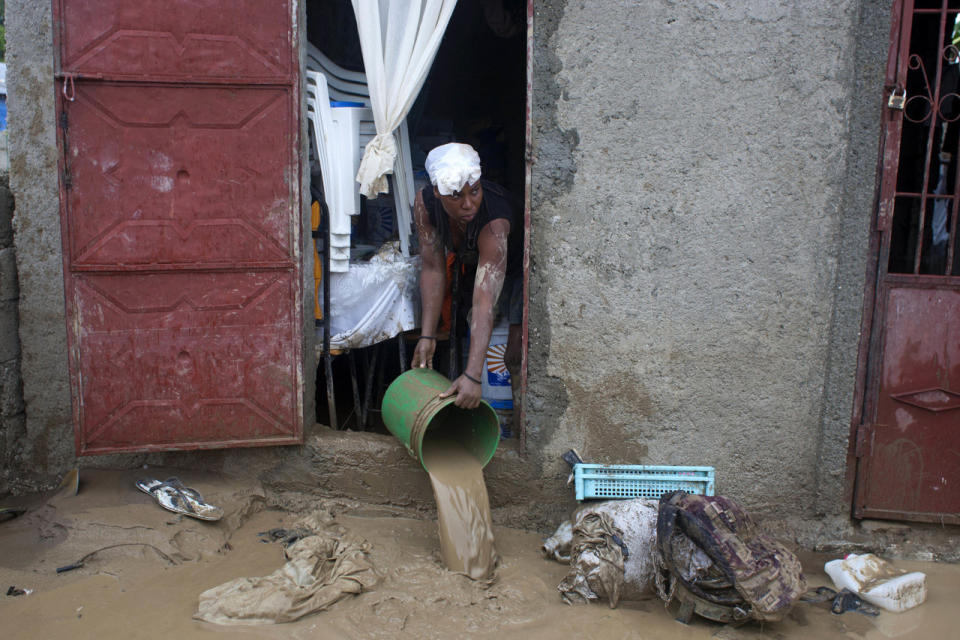
コンゴ民主共和国
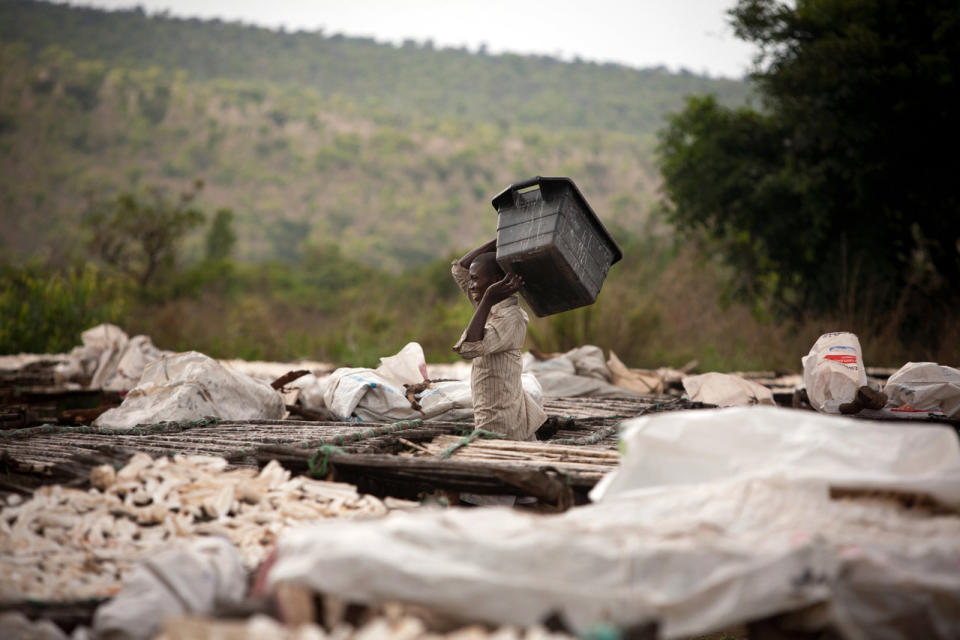
コンゴでは90%近くの人が農業で生計を立てているが、気候変動により中央部に位置するコンゴ盆地では豪雨、洪水、地すべり、土壌の浸食が発生し、農作物が大きな打撃を受ける可能性があるとBBCが伝えている。逆に南部のカタンガでは、2020年までに雨季が少なくとも2カ月短くなるだろうと予想されている。
また、温暖化によってマラリアや心臓血管病、水を介する感染症が増えるとも予測されている。
上の写真は、CO2を吸収するアカシアの木々の間でキャッサバを育てるコンゴ人男性。国連の地球温暖化防止条約で「CO2排出量の多い国」と登録されたことを受け、温暖化防止に取組んでいる。
アフガニスタン
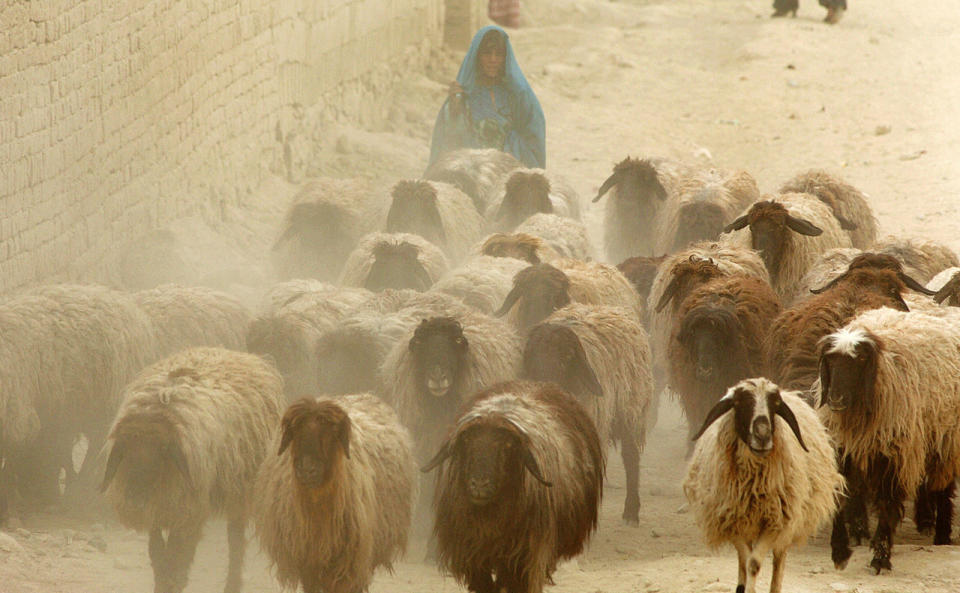
中央アフリカ共和国
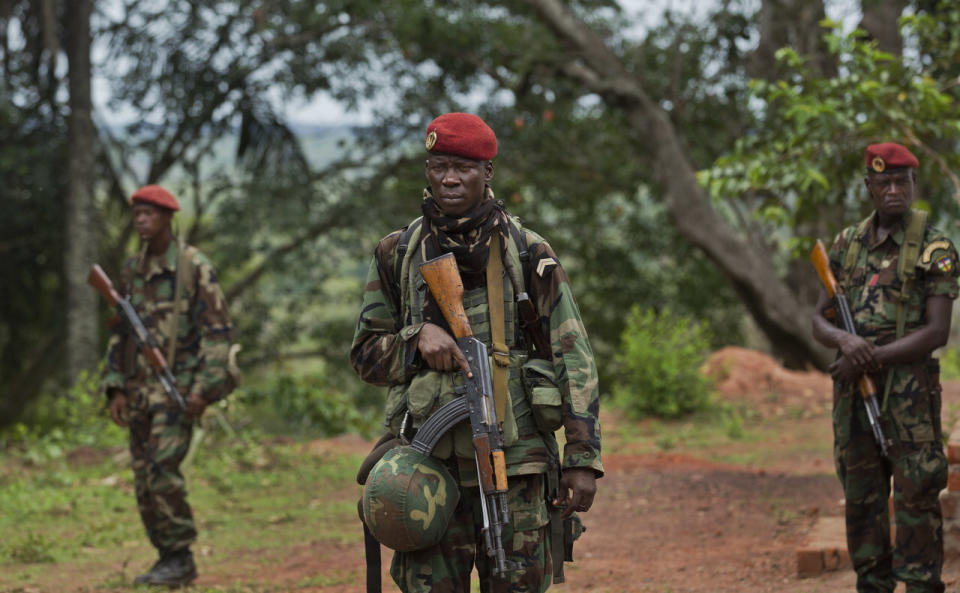
森林の研究機関「国際林業研究センター」の科学者のデニス・ソンワ氏は「状況に適応する能力をつければ、国を発展させることができます。誰もが参加できるような仕組みを作ることによって、紛争を減らし国内の緊張を和らげるでしょう」と語った。
ソンワ氏によれば、中央アフリカ共和国では、いまだにかんがいシステムが整備されておらず、雨季に降る雨に頼る昔ながらの農法が使われている。
一方で、首都バンギでは何度も洪水が起き、年間平均700万ドルの損害が出ているとガーディアン紙は伝える。
上の写真は、アメリカ陸軍特殊部隊との会議が行われている建物を警備する中央アフリカ共和国軍の軍人だ。
ギニアビサウ
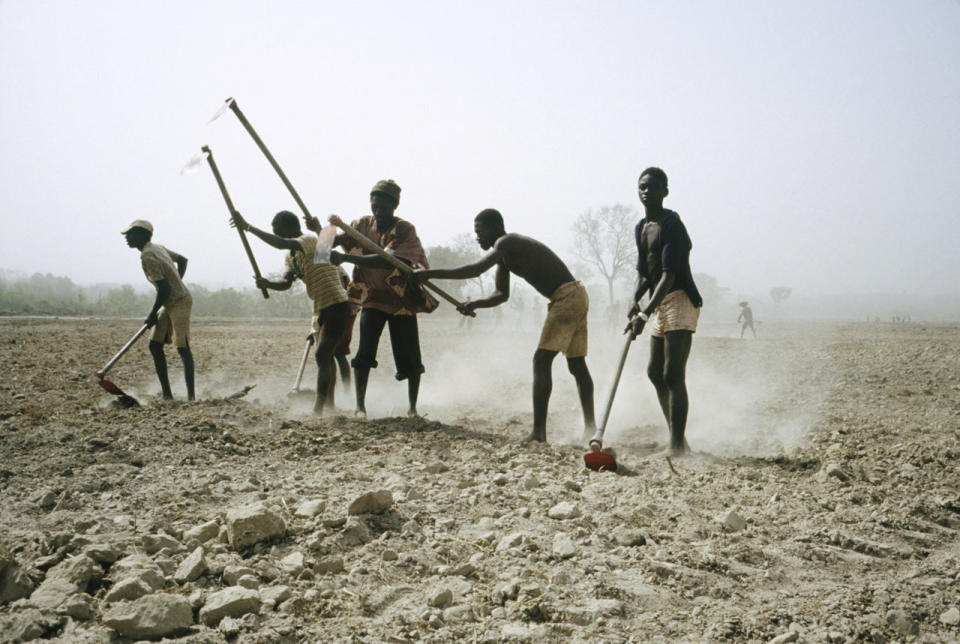
ギニアビサウもかんがいではなく、雨に頼って農業をしており、これがすでに問題となっている。
報告書には「気温の上昇にともない、あちこちで雨の降り方が不規則になっている。そして地表から蒸発する水蒸気の量が急激に増えたことで、農作物の生産が落ち、土壌が浸食されるようになった」と書かれている。
上の写真は、ギニアビサウの都市コントゥボエル近郊で水田を耕す農夫たちだ。
This article originally appeared on HuffPost.

